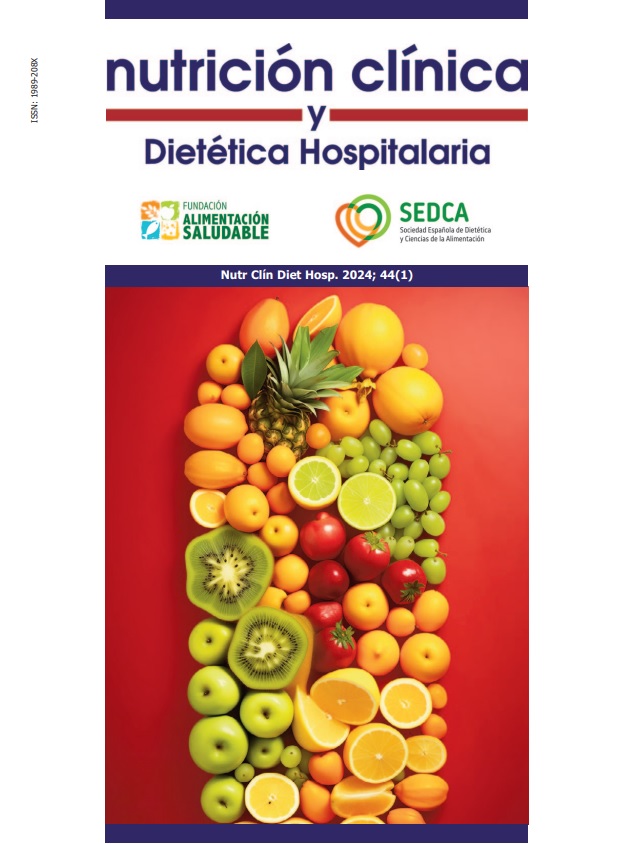Eating behavior and atherogenic indicators in the COVID-19 pandemic in hydrocarbon camp workers.
DOI:
https://doi.org/10.12873/441maytaKeywords:
Comportamiento alimentario, indicadores aterogénicos, trabajo en campamento, pandemia, COVID-19Abstract
Introduction: Mandatory or voluntary confinement during
the COVID-19 pandemic has modified food intake and increased the sedentary lifestyle; increasing the atherogenic
risk in the population.
Objective: Determine the association between eating behavior and atherogenic indicators during the COVID-19 pandemic period in workers at a hydrocarbon camp.
Materials and methods: Research with a quantitative
approach, observational design, descriptive cross-association, retrospective. The final study sample was made up of 85 workers from the hydrocarbon company Compañía Operadora de Gas del Amazonas (COGA), in Peru; during the period January to December 2021. Adult workers of both sexes were included in the study, with information recorded in occupational medical examinations. Eating behavior was collected through a semiquantitative food frequency questionnaire (EFCA). The biochemical profile was obtained from occupational health examinations by determining the Castelli index, TG/HDL index, and Kannel index. To evaluate the association between eating behavior and atherogenic indicators, the non parametric Chi square statistical test was used.
Results: 63.5% of the evaluated workers presented cardiovascular risk; the Castelli and Kannel indicators with 40.0% and 41.2%; respectively, they are within a risk range; being less than 50% of those interviewed; The TG/HDL indicator was 63.5% with cardiovascular risk. Likewise, 60.0% presented unhealthy eating behavior. When evaluating the association between eating behavior and atherogenic indicators, a p value <0.05 was obtained.
Conclusion: Eating behavior has an association with
atherogenic indicators in workers at a hydrocarbon camp; increasing cardiovascular risk in those who exhibited unhealthy behavior.
References
Díaz-Ortega J, Quispe-Tácunan A, Gallo-Ancajima M, CastroCaracholi L, Yupari-Azabache I. Indicadores de aterogenicidad en
la predicción del síndrome metabólico en adultos, Trujillo-Perú. Rev Chil Nutr 2021; 48(4): 586-594. doi: http://dx.doi.org/
4067/S0717-75182021000400586.
Rodríguez-Rosas C, Zapata-Gerónimo D, Acuña-Lara J, TorresZapata A, Castillo D. Prevalencia de obesidad de peso normal en estudiantes universitarios en Ciudad del Carmen, Campeche, México. Lecturas: Educación Física y Deportes. 2021;25(274):64-
doi: https://doi.org/10.46642/efd.v25i274.2345.
Morales J, Matta H, Fuentes-Rivera J, Pérez R, Suárez C, Alvines D, Carcausto W. Exceso de peso y riesgo cardiometabólico en
docentes de una universidad de Lima: oportunidad para construir entornos saludables, Educ Med. 2018;19(S3):256-262. doi:
https://doi.org/10.1016/j.edumed.2017.08.003.
Almendra-Pegueros R, Baladia E, Ramírez-Contreras C, RojasCárdenas P, Vila-Martí A, Moya Osorio J. Conducta alimentaria
durante el confinamiento por COVID-19. Revista de Nutrición Clínica y Metabolismo. 2021;4(3):150-156. doi: https://doi.org/
35454/rncm.v4n3.267.
Alemán A, González Y, Pérez de Alejo L, Toledo Y, Díaz G, Pérez A. Asociación entre factores de riesgo de enfermedad aterogénica
en pacientes geriátricos. Medicent Electrón. 2022;26(3):544-561. Disponible en: http://scielo.sld.cu/scielo.php?script=sci_arttext&pid=S1029-30432022000300544&lng=es
Hun N, Urzúa A, López-Espinoza A. Alimentación y migración: análisis descriptivo-comparativo del comportamiento alimentario
entre chilenos y colombianos residentes en el norte y centro de Chile. Nutr. Hosp 2020;37(4):823-829. doi: http://dx.doi.org/
20960/nh.03035
Tazeoglu A, Bengu F, Idiz C, Eating Behaviors During the Quarantine Period during the COVID-19 Pandemic Period. Nutr
Clínica Dietética Hosp. 2021;41(2):86-93. doi: https://doi.org/10.12873/412tazeoglu.
Díaz J, Yupari I. Modelo de predicción para Síndrome metabólico en adultos de Trujillo, Perú. Rev haban cienc méd. 2022;
(1):e4369. Disponible en: http://www.revhabanera.sld.cu/index.php/rhab/article/view/4369.
Cartagena-Cutipa R, Carhuaz-Valdez D, Valdez Herrera D, Bermejo-Mallea C. Hábitos alimentarios y bienestar emocional de
los estudiantes de ingeniería de la universidad privada de Tacna durante la inmovilización obligatoria por COVID 19. Ingeniería
investiga. 2021;3(2):62-67. doi: https://doi.org/10.47796/ing.v3i2.532
Palomino-Pérez A. Rol de la emoción en la conducta alimentaria. Rev Chil Nutr. 2020;47(2):289-91. doi:http://dx.doi.org/10.4067/
S0717-75182020000200286.
OMS. Acciones y directrices de Organismos Internacionales que orientan y normativizan las intervenciones educativas en
alimentación y nutrición. [citado 2 de junio de 2023]. Disponible en: https://www.who.int/es/news/item/12-01-2021-who-urgesgovernments-to-promote-healthy-food-in-public-facilities.
García A, Melo P, Rodríguez M, Silva D, García A, Melo P. Índices aterogénicos y composición corporal en cadetes de una escuela
de formación militar colombiana. Sanid Mil. 2020;76(1):13-18. doi: https://doi.org/10.4321/S1887-85712020000100003.
Cachay-Barboza EP. Relación del estado nutricional e índice triglicéridos/c-HDL en adultos atendidos en un hospital público.
Acta Med Peru. 2022;39(3): 246-53. doi: https://doi.org/10.35663/amp.2022.393.2393.
Pajuelo J, Torres L, Agüero R, Bernui I. Sobrepeso y obesidad en la población adulta del Perú. An Fac med. 2019;80(1):21-7. doi:
Downloads
Published
How to Cite
License
Copyright (c) 2023 Nutrición Clínica y Dietética Hospitalaria

This work is licensed under a Creative Commons Attribution-NonCommercial-NoDerivatives 4.0 International License.
Los lectores pueden utilizar los textos publicados de acuerdo con la definición BOAI (Budapest Open Access Initiative)



